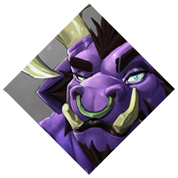
If you've ever tried to play ranked Valorant with your friends and got hit with a "party restricted" message, you're not alone. Riot Games has rules around which ranks can queue together, and while they help keep matches fair, they can also be frustrating—especially if your squad isn’t all in the same skill range.
This guide breaks down exactly what ranks can (and can’t) play together in 2025. Whether you’re queuing as a duo, trio, or full 5-stack, we’ll walk you through what’s allowed—and what’s not.
Starting in 2025, Valorant replaced Episodes with a new yearly system called Seasons. Instead of having two Episodes per year (each with three Acts), Season 2025 covers the entire year and is broken into six Acts.
Here’s what’s changed:
This change doesn’t affect how matchmaking or rank progression works day-to-day, but it does change how your rank resets are structured. So if you're coming back in the middle of the year, be ready for a fresh set of placements.
One of the most useful changes to Valorant’s ranked system in 2025 is the introduction of Rank Shields. These are designed to make demotions feel less harsh—especially when you’re barely hanging onto your current rank.
Here’s the short version:
It’s like having two safety nets built in.
Before this system, one bad streak could knock you down fast, even if you’d just climbed. Now, it’s more forgiving. If you’re Gold 1 and have a rough day, you get two chances before dropping to Silver 3.
That breathing room can really help if you’re hovering around your peak.
Valorant’s ranked mode isn’t just about winning games—it’s also about where you stand compared to other players. Your rank reflects your skill level, and it’s used to match you with players around the same level. The system is designed to make games fair and competitive, whether you’re climbing the ladder solo or playing with friends.
There are nine ranks in Valorant. All of them—except the highest one—are split into three tiers. The higher the number, the better the tier. Here's how they’re ordered:
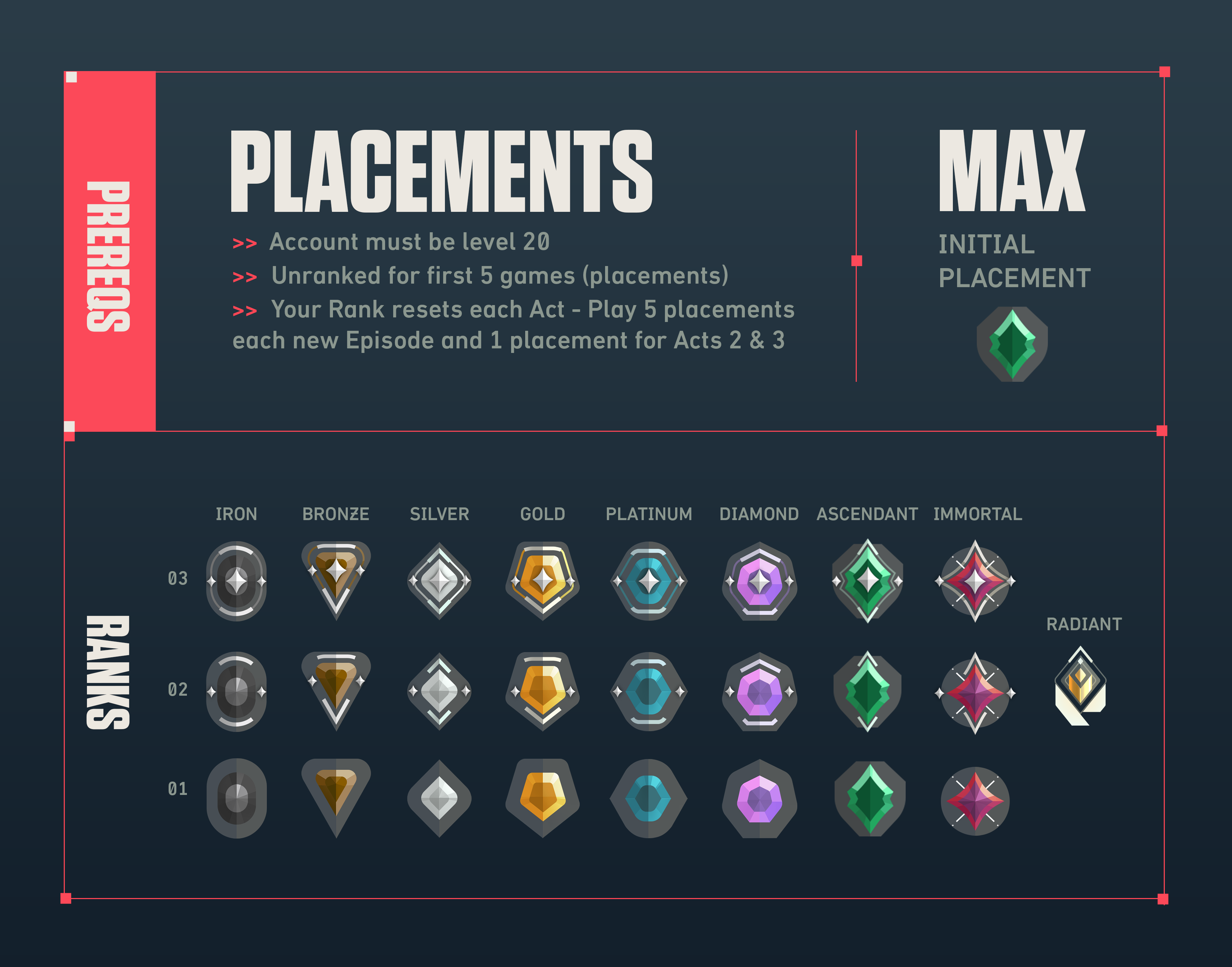
In Valorant, you have two rankings: your current rank and your Act Rank. They’re related, but not the same.
Here’s how it works: Every time you win a ranked match, a triangle is added to your Act Rank badge. The triangle reflects the rank you were at the end of that match. So if you win a game that promotes you from Gold 3 to Platinum 1, that win counts as Platinum 1.
The triangle at the top of your Act Rank badge is what matters most—it shows your highest win of the act, and that’s what your final Act Rank will display.
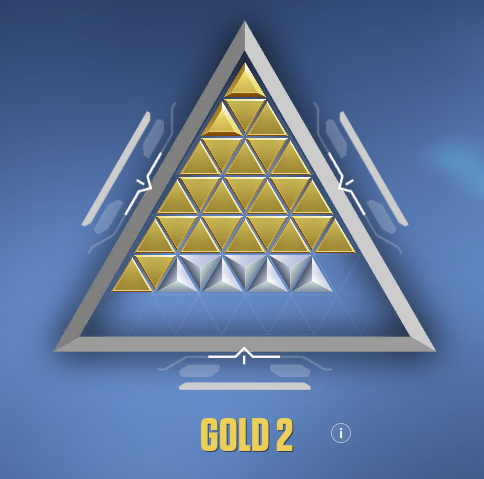
Some extra notes:
If you’re ever unsure what your Act Rank will be, just check the triangle chart in your Career tab. If there’s a triangle for a higher rank, that’s what your Act Rank will show.
The
color and size of each triangle in the badge show what rank you were when you won that match. As you win games at higher ranks, those higher-rank triangles start replacing older ones. It gives a more accurate visual of how far you’ve come over the act.
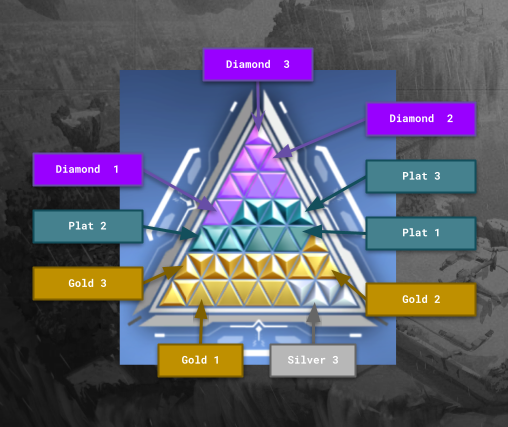
When you queue up for ranked, who you can play with depends on how many people are in your group. Valorant puts limits in place to keep matches fair, especially when there’s a big skill gap between teammates.

Want to a play competitive rank mode in a team of 5? Good news: you can play with anyone, no matter their rank. Iron, Gold, Radiant—it doesn’t matter, as long as all five of you queue together.
But there’s a catch: your Rank Rating (RR) will take a hit if your group includes players outside of the normal rank difference rules.
Also, 5-stacks only get matched with other 5-stacks, so queue times might be longer—especially at higher ranks.
If you are in Platinum, Diamond, Ascendant Immortal, and Radiant ranks it's probably not a good idea to play with an Iron friend. However this method is sometimes used to artificially boost someone's RR.
If you’re queuing with one or two friends, Valorant has stricter rules to keep games balanced. You can only play ranked together if your ranks are within a certain range. Here’s how it breaks down:
| Lowest Rank in Party | Highest Rank Allowed |
| Iron or Bronze | Silver (any tier) |
| Silver | Gold (any tier) |
| Gold | Platinum (any tier) |
| Platinum+ | Only 1 tier higher |
| Immortal+ | Only Duo or 5-stack |
So for example, if you're Gold 3, your highest-ranked teammate can be Platinum 3. But if they’re Diamond 1, you won’t be able to queue together.
You can play solo, duo, trio, or as a full five—but not in a group of four. Valorant doesn’t allow 4-stacks in ranked, and there’s a reason for that.
If four players queue together, the game has to fill the last slot with a solo player. That one solo teammate ends up at a big disadvantage and usually flamed to hell and beyond. Communication suffers, the team dynamic feels off, and it often leads to a poor experience—for everyone.
Riot disabled 4-stacks to avoid this exact issue. If you’ve got four friends ready to play, find a fifth or split up the group.
Yes, you can—but with some limits. Riot lets you queue with friends in competitive mode, but it depends on your party size and how close your ranks are.
If your ranks are too far apart, you won’t be able to play together in ranked. That’s when the game shows the “party restricted” message.
If your friend is unranked—meaning they haven’t finished their placement matches yet—they can still queue for ranked, but only with lower-ranked players.
Once those five placement games are done, they’ll get a rank, and matchmaking rules will treat them like any other player.
Valorant’s ranked system has a hard limit on how far apart player ranks can be in 2- or 3-player parties. If the gap is too wide, you won’t be able to queue together.
| Lowest Rank in Party | Highest Rank Allowed |
| Iron/Bronze | Silver |
| Silver | Gold |
| Gold | Platinum |
| Platinum+ | 1 tier higher only |
| Immortal+ | Duo or 5-stack only |
This is all about competitive fairness. Riot doesn’t want a Diamond player carrying an Iron friend in ranked—it messes with matchmaking and often ruins the experience for others in the lobby.

The border around your Act Rank pyramid isn’t just for looks—it shows how many ranked wins you’ve earned in the current act. It evolves as you hit these win milestones: 9, 25, 50, 75, and 100 competitive wins.
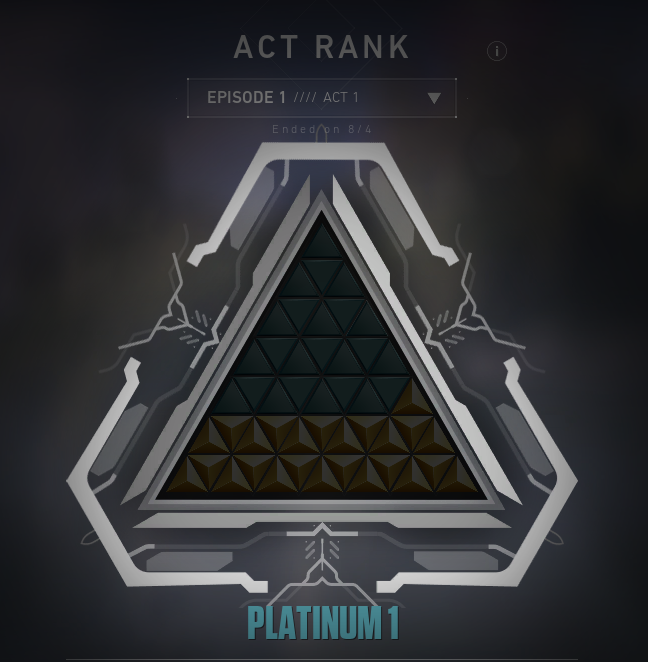
There’s also a progress bar below the pyramid that shows how close you are to unlocking the next border level.
Your Act Rank Badge is based on your highest-ranked win and appears in your Career tab and on your Player Card. It’s only awarded once the act ends—so if you're proud of your performance, you can show it off in the next act.
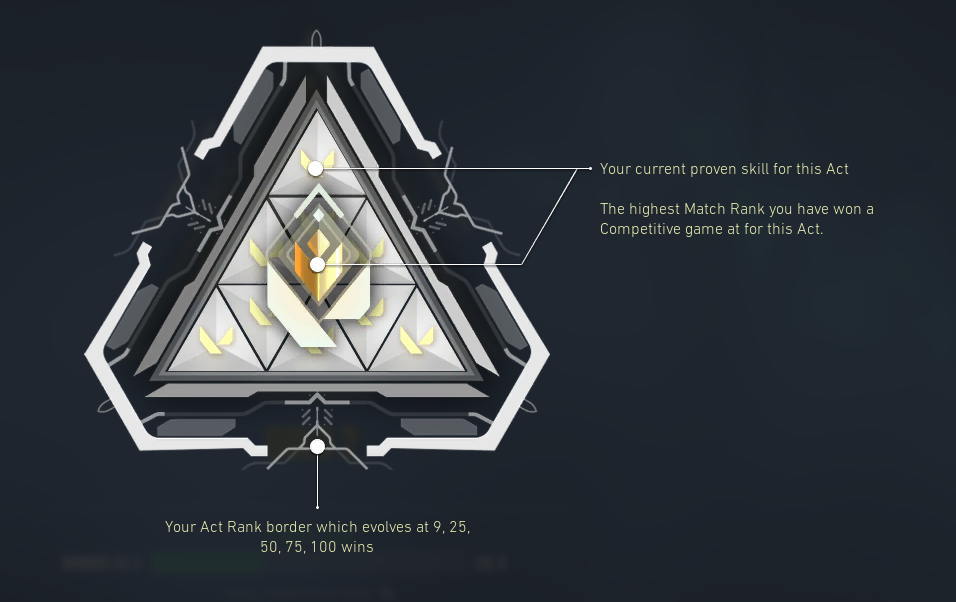
To qualify for ranked rewards and receive the Act Rank badge, you’ll need at least 9 ranked wins in an act (not just placement games). That’s the minimum to unlock the first border level.
At the end of each Episode, you’ll also get a gun buddy that reflects the highest Act Rank badge you earned during that entire Episode.
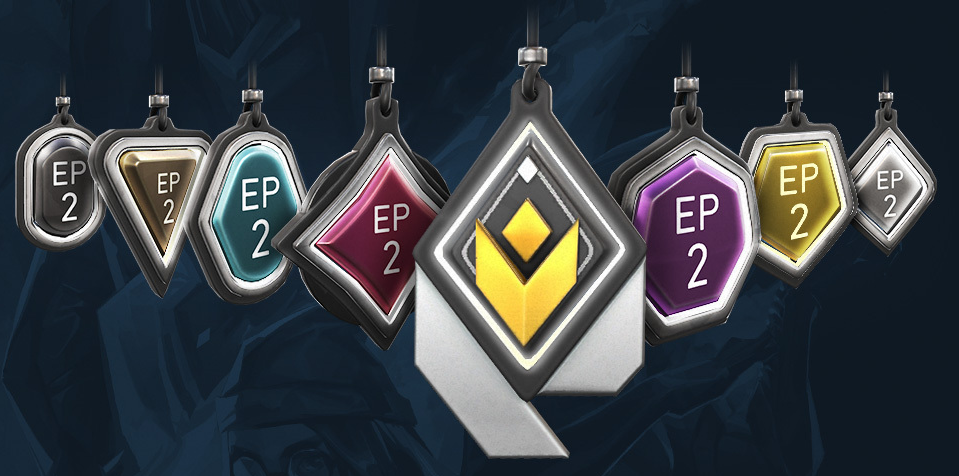
Q: Can Bronze play with Gold in Valorant?
No. Bronze players can only queue with players up to Silver. Gold is one rank too high.
Q: Can Silver queue with Platinum?
Also no. Silver can go up to Gold, but not Platinum.
Q: Can I 4-stack in ranked Valorant?
No. Riot has disabled 4-stacks in competitive to avoid sticking a solo player with a coordinated group.
Q: Can unranked players play ranked with friends?
Yes, but only with friends ranked Gold or lower. Once they complete their placements, normal rank rules apply.
Q: Why can’t I queue with my friend in ranked?
Chances are, your ranks are too far apart. The game blocks parties that don’t meet the rank disparity rules.
Q: What happens if I queue with a 5-stack and ranks are far apart?
You’ll get an RR (Rank Rating) penalty. If there is a fairly large skill discrepancy skill gap you can expect less balanced matches, the bigger the difference the less balanced the matches are—especially if someone is Immortal or Radiant.
Q: Is there a way around rank restrictions?
Not in ranked. You can still play together in Unrated, Swiftplay, or Custom lobbies.
Q: How can I improve my Rank Rating?
The only real way to improve your rating is to play ranked games and consistently win more than you lose. If there is a fairly large skill disparity between your teammates consider buying an account with lower current rank rating, check our Iron Valorant Accounts here.
Q: What counts as a Competitive Match?
It's a Competitive Game that you play in the Competitive (Ranked) Mode. It's the equivalent of Ranked Solo/Duo combined with Flex from League of Legends Ranks System.
Q: Does your Account Level influence your RR gains?
The Game's mechanic work in a way that it does not take account's level into account. However if you are very high level it probably means you have played a lot of ranked matches. This can cause indirectly less volatile MMR that needs more games to climb on the ranked ladder. Want to fix your RR quickly? Consider getting an elo boost.
Q: What's the highest rank you can get after placement games?
The highest rank you can reach right now is Platinum 1, you would need very high K/D/A and consistently high win ratio in placements to achieve it.
Valorant’s ranked system might feel strict, but it’s built to keep matches fair. Whether you’re climbing solo or queuing with friends, knowing the matchmaking rules helps avoid confusion—and wasted queue time.
If your group’s ranks don’t line up, try playing Unrated or build a 5-stack to work around the limits (just watch out for those RR penalties).
At the end of the day, the best way to rank up is to play with people around your skill level—and communicate well.
Want to learn about Valorant rank distribution? Read our dedicated article here.
